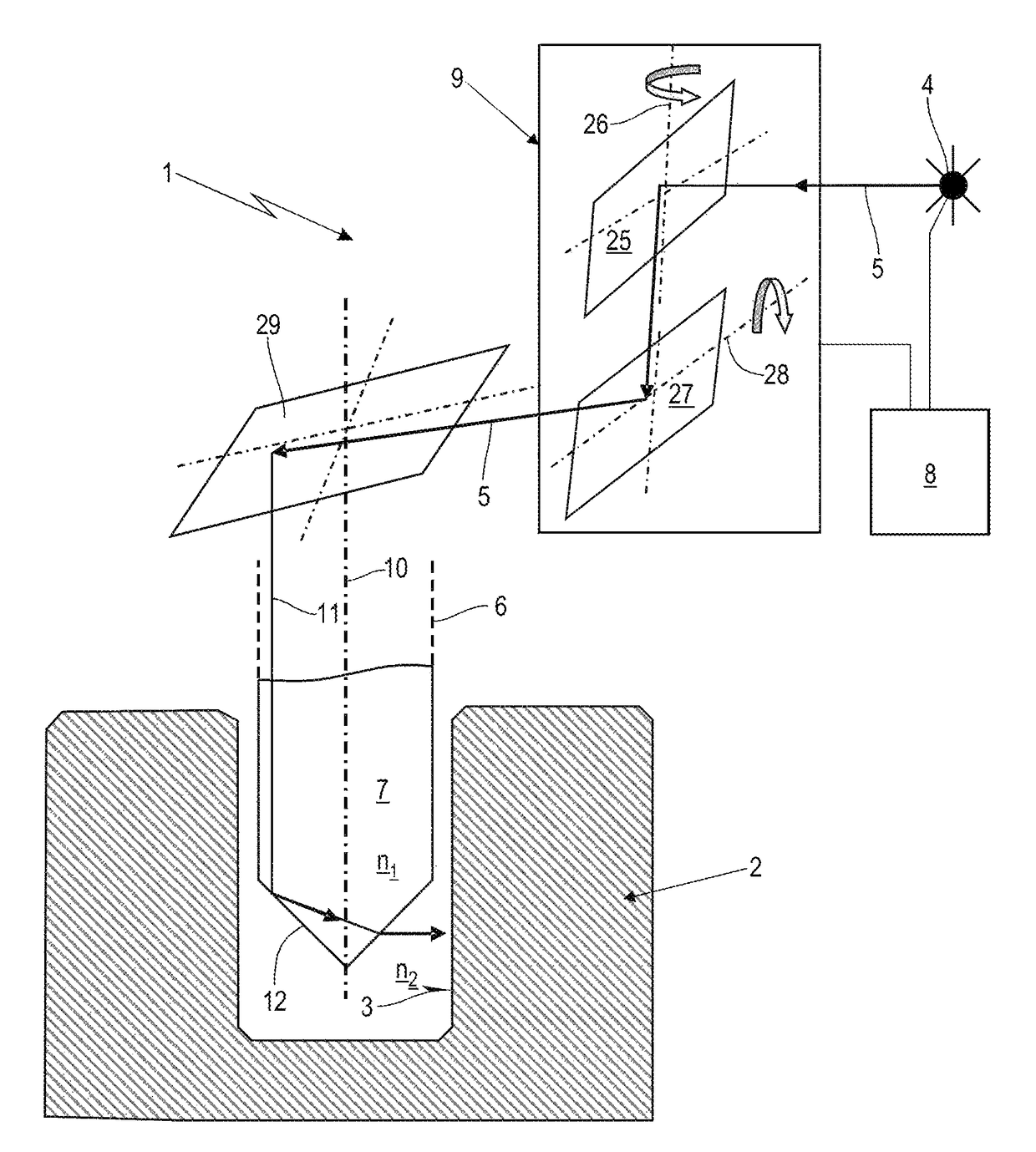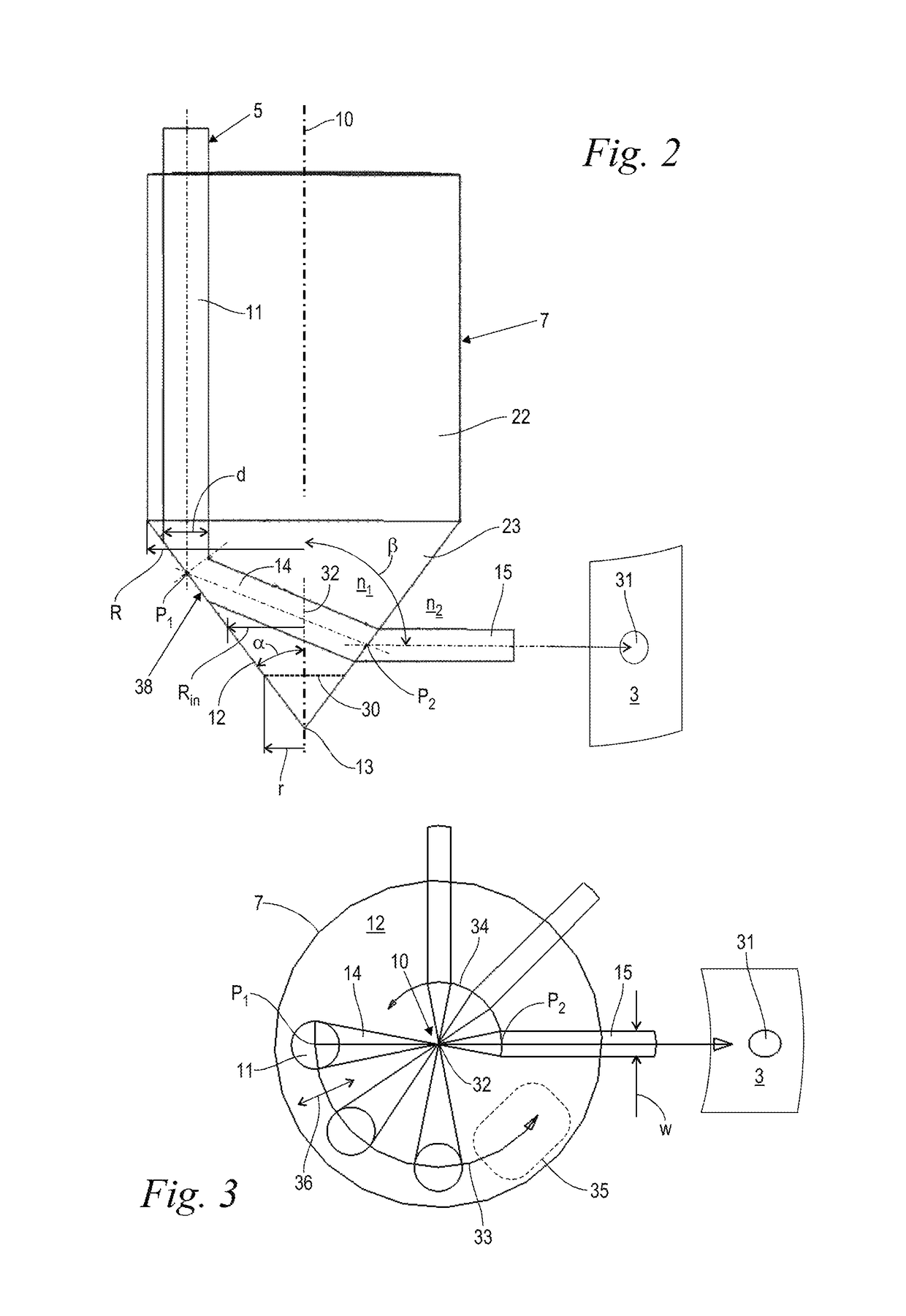Laser system and method for the treatment of body tissue
a laser system and body tissue technology, applied in the field of laser system for the treatment of body tissue, can solve the problems of difficult to achieve the effect of reducing or turning the laser intensity
- Summary
- Abstract
- Description
- Claims
- Application Information
AI Technical Summary
Benefits of technology
Problems solved by technology
Method used
Image
Examples
Embodiment Construction
[0049]FIG. 1 shows in a schematic cross sectional view a cavity in body tissue 2, wherein said cavity forms an inner circumferential tissue surface 3. For the treatment of the body tissue 2 on the inner circumferential tissue surface 3 an inventive laser system 1 and related inventive operation method is provided. The inventive laser system 1 is depicted in a schematic block diagram.
[0050]The laser system 1 comprises a laser source 4 for the generation of laser beam 5, a hand piece 6 with a treatment head 7, a control device 8, and a scanner 9. The scanner 9 comprises two mirrors 24, 27, which are rotationally movable about two perpendicular axes 26, 28. The rotational movement of both mirrors 25, 27 is controlled by the control device 8. Alternatively, the scanner 9 may comprise of only one mirror, 25 or 27, which is rotationally movable about two perpendicular axes. The control device 8 further controls the operation of the laser source 4 in terms of intensity and pulse sequences....
PUM
 Login to View More
Login to View More Abstract
Description
Claims
Application Information
 Login to View More
Login to View More - R&D
- Intellectual Property
- Life Sciences
- Materials
- Tech Scout
- Unparalleled Data Quality
- Higher Quality Content
- 60% Fewer Hallucinations
Browse by: Latest US Patents, China's latest patents, Technical Efficacy Thesaurus, Application Domain, Technology Topic, Popular Technical Reports.
© 2025 PatSnap. All rights reserved.Legal|Privacy policy|Modern Slavery Act Transparency Statement|Sitemap|About US| Contact US: help@patsnap.com



